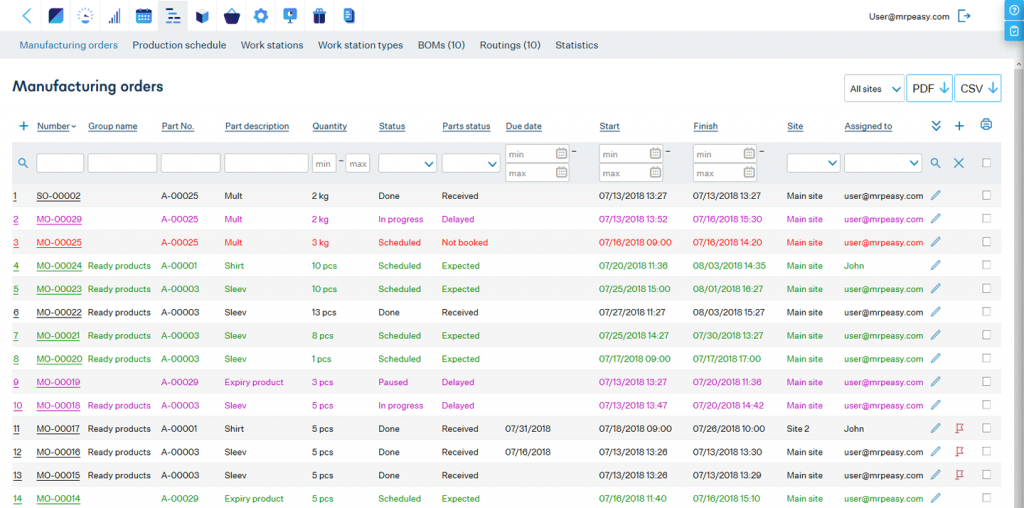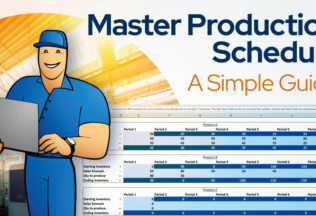What Are Contract Manufacturing and Toll Manufacturing?
Contract manufacturing and toll manufacturing are the preferred ways of doing business for many companies, large and small. In this post, we take a look at what they are and how they differ.

You can also listen to this article:
What is contract manufacturing?
Contract manufacturing is the process of outsourcing production to a subcontractor. It is often used to reduce expenses for manufacturing equipment and production worker salaries, to respond to spikes in demand, or enter into new markets. Let’s dive deeper.
There are many paths to manufacturing success. Some companies start from scratch and produce their products in-house from day one. Others produce some aspects of their goods while buying partially processed materials or sub-assemblies from sub-contractors.
Further still, there are those who manufacture their entire product lines using another company’s facilities either as a transition to in-house production or as an element of their core business model. In this case, those who manufacture their products through other entities are doing so using contract manufacturing.
In contract manufacturing, a parent company will initiate a contract between itself and another manufacturer to produce a predefined number of products for the parent company for a predetermined period. Also called private manufacturing or white-label manufacturing, this type of arrangement is commonly in use in many industries.
One such example is food production where name-brand food labels produce their own product line while using the same equipment and often the same raw materials to leverage excess capacity in order to produce private-label foodstuffs for local grocery chains which may often sell the in-store and name-brand goods side by side.
Why do companies use contract manufacturing?
There are many good reasons for companies to use contract manufacturing. As manufacturing is usually a capital-intensive endeavor, contract manufacturing allows companies to focus on product design, marketing, sales, and development while rendering the manufacturing costs to a less variable, semi-fixed cost that is easier to manage.
This way, companies can focus on core competencies and grow their product lines without the financial requirements of capital equipment purchases.
Contract Manufacturing may also be used as a partial or total bridge to transition to in-house manufacturing. Again, depending on the cost of capital, a company with an innovative product and an expanding market may choose to produce some of its products or sub-assemblies at a contract manufacturer to shore up production until capital equipment can be purchased and commissioned in-house.
This allows for incremental expansion without a high level of debt because the parent company can afford a “pay-as-you-go” concept to bringing production in-house.
Finally, contract manufacturing can be useful for companies experiencing highly cyclical, seasonal production where the additional investment in equipment is not desirable or cost-effective but extra production in support of existing product lines is needed seasonally. This gives the parent company the flexibility to scale back to its in-house production mode once the season has passed and allows them to control production costs, raw material inventory, and other related operations and holding costs on a less variable basis.
Contract manufacturing risks
Contract manufacturing does, however, carry certain risks. Some challenges of contract manufacturing to be aware of when manufacturing through an outsourced third-party manufacturer include:
- Geographic considerations – Some third-party manufacturers may be limited by their country’s legislation from shipping to certain destinations, leaving the parent company without a channel for their goods.
- Limited logistics – Many contract manufacturers are bulk manufacturers and do not perform well or at all with fulfillment. In this case, the parent company may realize cost savings on the production of goods while still having to manage the shipping, logistics, and distribution costs separately.
- Quality control – Regardless of whether the contract supplier is using a process or discrete manufacturing method to manufacture goods, the parent company will have less ability to manage, control, and ensure quality from the third-party manufacturer compared to in-house controls.
- Intellectual property – For highly patented or extremely technical goods, the use of third-party manufacturers can lead to a leak of proprietary information wherein sensitive business data may fall to competitors who can use it to produce similar products at lower costs.
What is toll manufacturing?
While quite similar to contract manufacturing, toll manufacturing has one distinct difference. In contract manufacturing, the third-party manufacturer is responsible for the entire production cycle of finished goods. This includes the procurement of raw materials and all production phases from beginning to end.
In toll manufacturing, however, the parent company provides the materials and product design itself while the third-party company is responsible for processing the raw materials or supplied sub-assemblies into finished products. Therefore, in toll manufacturing, the parent company has greater control over the third-party producer because it is supplying and managing the flow of raw materials.
Some notable examples of toll manufacturing include:
- Apple/Foxconn – While everyone knows Apple, many may not recognize Foxconn. Foxconn is the manufacturer to whom Apple sends its materials such as electronic components, housings, charges, screen glass, and LEDs for the production of its computers and phones.
- Microsoft/Flextronics – Like Apple, Microsoft partners with Flextronics to produce its finished products, the components of which are supplied by Microsoft.
- Boutique and small footprint wineries – Toll manufacturing isn’t just used by highly scaled companies such as Apple and Microsoft. Many small and boutique wineries across the world use mobile manufacturing bottling lines to bottle and label their wine at the end of its aging. This allows the winery, not unlike Apple, to maintain control of its product and quality without having to invest in expensive manufacturing operations that may only be used part of the time.
Toll manufacturing allows companies a higher degree of control than contract manufacturing and mitigates the quality control risks of the latter. It also allows parent companies to manage logistics and fulfillment better, and retain more control over proprietary aspects of the business.
Contract manufacturing with ERP/MRP
Both contract and toll manufacturing arrangements lend themselves to the benefits of a robust manufacturing ERP system. This is true whether the user of the software is the parent company or the third-party manufacturer. In either case, the utility of an MRP system mostly comes down to its bill of materials (BOM) implementation.
With the BOM tied to routings, inventory use, and output of finished goods, a parent company can monitor and maintain visibility over some or all the goods it manufactures through third parties. This allows a quicker response when and if issues arise.
For third-party manufacturers, the use of flexible, agile manufacturing software means that they can take on finished goods manufacturing from a variety of parent companies and manage the production flow with accurate BOMs, fully costed material, controllable labor centers, and flexible production lines, all within a unified system.
These software platforms offer third-party manufacturers capabilities such as multi-level BOMs, EDI transmissions, production tracking, shop floor mobility, engineering change order management, revision and versioning controls, expiry and lot control, and many other features.

Key takeaways
- In contract manufacturing, a business uses another company’s production facilities from procurement to the emission of the finished goods.
- In toll manufacturing, the parent company supplies the manufacturer with raw materials and design, retaining a degree of control over the production process and supply chain.
- Opting for contract or toll manufacturing allows companies to focus on product design, marketing, sales, and development while rendering the manufacturing costs to a less variable, semi-fixed cost that is easier to manage.
- In both contract and toll manufacturing, and for both parties, using MRP software is a sure way of simplifying the process and increasing the transparency of the partnership while concurrently improving many manufacturing processes.
Frequently asked questions
In contract manufacturing, a third-party manufacturer and a parent company enter into a contract to outsource all or parts of the latter’s manufactured goods. A prominent example is Starbucks which has third-party companies responsible for sourcing and processing all of its coffee.
In the vast majority of cases, manufacturing companies produce their finished products themselves using in-house labor, equipment, and workstations. In contract manufacturing, however, a part or all of the manufacturing of products is outsourced to third-party manufacturers.
In contract manufacturing, the third-party manufacturer is responsible for the entire production cycle of finished goods, including the procurement of raw materials and all production phases from beginning to end.
In toll manufacturing, however, the parent company provides the materials and product design while the third-party company is responsible for processing the raw materials or sub-assemblies into finished products.
You may also like: Types of Manufacturing Process – A Comprehensive Guide




